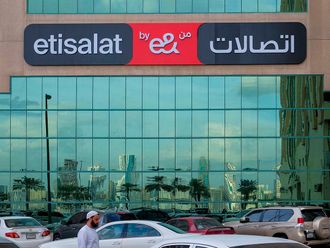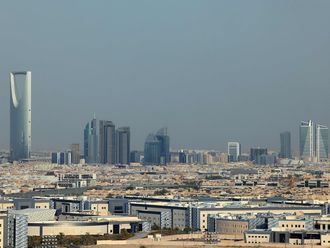Dubai: Risk prone investors in the UAE and the Gulf region should look at Europe for opportunities post the quantitative easing in that part of the world, an official at Barclays Wealth Management told Gulf News.
Europe will spend $1.3 trillion (Dh4.8 trillion) to buy local bonds in a low interest rate environment, creating opportunities for investors in equity markets because they can maintain margins, renegotiate credit terms on far more conducive basis, and support margin growth.
“On the back of policy action by the central banks there has been a multitude of opportunities available for all types of risk appetite to consider equities as part of their portfolio built-up,” Vic Malik, Head of Global Investments and Solutions for Barclays Wealth and Investment Management, Mena told Gulf News.
For investors in the Middle East, the opportunity lies in Europe because of a low interest rate environment, helping companies to finance activities at cheaper rates.
“For Middle East based investors, we believe that European Equities offer excellent investment opportunities, mainly because the ECB is intent on reflating the economy through its programme of Quantitative Easing (QE), Malik said.
European companies enjoy a low interest rate environment, which enables them to refinance their obligations. A weaker euro has been helpful in making European exports attractive, and lower oil price is expected to benefit the consumer.
“The supportive macro factors will act as tail wind and we expect European equities to continue to perform for the balance of this year. Eurostoxx gained around 15 per cent this year and our strategists believe that European equities are expected to outperform US equities,” said Malik.
This financing activity to small and medium enterprises would show up on the manufacturing indices, consumer confidence etc. The lower euro will provide a tailwind for European equities because of interest rate differentials, which can provide impetus to exporting companies such as BMW or Daimler etc. On the consumer side, the money that the household retains because of a drop in oil prices will show up in their spends, he said.
The weaker euro has resulted in products of companies based in Europe being far more competitive purely on interest rate and forex differential basis.
Risk appetite returns
“We are witnessing an increase in demand for equities. They are certainly looking at equities and are asking us to engage in discussion as to how to build exposure to this asset class,” he said.
Barclays offers advise to investors on nine asset classes and starts the portfolio with a strategic asset allocation using investment management, and on an ongoing basis, it shifts the proportion of asset class in that portfolio through some percentage points depending upon value.
“We use tactical asset allocation to demonstrate our investment conviction and to generate alpha in a globally diversified portfolio. Even though, we currently prefer developed market equities, we are also holding a larger proportion of the portfolio in cash to capture opportunities as we feel that there will be ample opportunities in developed and emerging market equities for which we will divert the cash funds into equities,” said Malik.
Investors of a balanced portfolio are currently holding 70 per cent equities and 15-20 per cent in cash, sensing opportunities for sensible returns.
Decade of central bank:
“Some economists call it the age of the central banker. A central banker clearly has the ability to create an environment where private individuals as well as corporates can engage in respective activities that spur growth. In the US, the FED has offered a template to the rest of the world on how to deal with structural economic issues. Since then Japan, Europe and a good part of emerging market policymakers have prioritised growth on their agenda, Malik said.
Due to a recovering economy, the Federal Reserve might start increasing rates sooner than later, market participants say.
“We don’t want a low volatility environment to lure us into thinking that everything is OK. There are risk out there and we want those risks to be better understood and beyond that we want to deploy our cash over a period of time,” Malik said.
Barclays also likes Japan, India, which is trying to achieve the highest rate of growth in the world, and Indonesia.
Selective on US markets:
“We like the prospects of US markets, but we like those sectors which are expected to do well in the backdrop of falling oil prices and rising interest rates, we like cyclicals such as the consumer discretionary and the US financial sector which would probably witness an improvement in margins as they re-price their loan book,” Malik said.
Barclays also finds an opportunity in US consumers due to falling oil prices as spending shifts from essentials such as heating to discretionary items.
Diversified GCC investor:
The GCC investor is the most diversified investor in currency terms. They have always had allocation to the pound as they own real estate in the United Kingdom. They have allocations in dollar, euro and pounds.
Falling prices of crude oil weighed on investor sentiment, but Barclays eked out opportunity for investors in that too.
“Major oil integrated companies have stemmed the free fall despite falling oil prices. They have much to do to ensure they meet EPS [earnings per share] expectations, hence the likes of BP and Chevron started to cut cost, mainly CAPEX [capital expenditure] cuts.” he said.
Barclays’ has a total of asset under management of 200 billion pounds at a global level, and has billions of dollars under management from the Middle East.












